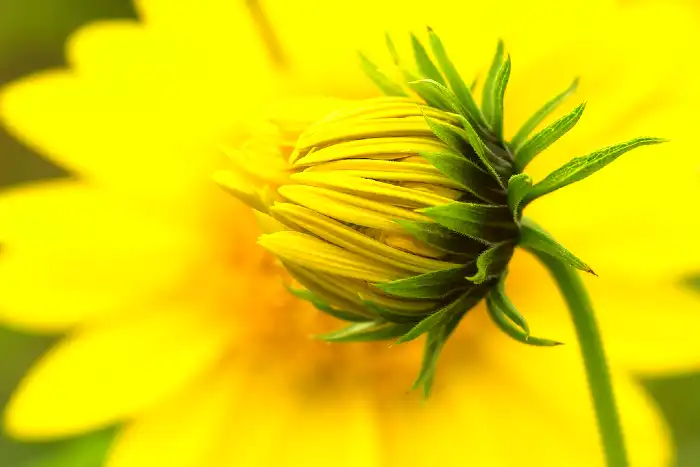Introduction
In the vast spectrum of colours that paint our world, yellow stands out as a beacon of warmth, happiness, and energy. Often associated with sunshine, optimism, and creativity, yellow has a fascinating history and impact on our lives. In this article, we’ll explore eight amazing facts about the colour yellow that delve into its cultural significance, psychological effects, and scientific marvels.
A Historical Palette: Yellow Through the Ages
To truly appreciate the colour yellow, it’s essential to delve into its historical significance. In ancient civilizations, yellow was a symbol of divinity and royalty. The Egyptians associated the colour with the sun god Ra, while in China, yellow was the imperial colour, reserved exclusively for the emperor. In medieval Europe, yellow became linked with Judas Iscariot, leading to negative connotations. However, artists like Vincent van Gogh and Claude Monet rekindled the love for yellow in their vibrant masterpieces during the Renaissance.
Nature’s Golden Touch: Yellow in Flora and Fauna
Nature has an unparalleled ability to inspire, and the colour yellow is no exception. Yellow is prevalent in the natural world, from the golden petals of sunflowers to the vibrant plumage of canaries. Many flowers, fruits, and animals use yellow as a survival tool. Bees are attracted to yellow flowers, aiding in pollination, and some animals display vibrant yellow hues as a warning to predators. It’s a testament to colour’s evolutionary role in the intricate dance of life.
The Psychology of Yellow
If colours were emotions, yellow would undoubtedly be the embodiment of happiness. Psychologists have long studied the impact of colour on human emotions, and yellow consistently ranks high in evoking feelings of warmth and joy. Unsurprisingly, yellow is often used in marketing and advertising to grab attention and convey a positive message. Surrounding yourself with yellow can lift your spirits and promote a sense of optimism, making it a popular choice for interior decor in spaces where people gather.
The Curious Case of Yellow in Food
Our relationship with food is deeply intertwined with colours, and yellow plays a crucial role in our culinary experiences. Think about a bowl of ripe bananas, a slice of lemon pie, or a sunny-side-up egg bursting with shades of yellow. Interestingly, the colour yellow is known to stimulate the appetite. This phenomenon is harnessed in the fast-food industry, where the strategic use of yellow in logos and interior design is believed to encourage customers to indulge in a delightful meal.
Yellow in Language: Expressions and Idioms
Colours have a unique ability to convey emotions and ideas through language, and yellow is no exception. Like many other languages, English is filled with expressions and idioms featuring yellow. Phrases like “yellow-bellied” to describe cowardice or “yellow journalism” to criticize sensationalism highlight the diverse range of associations people have with this colour. On a more positive note, sayings like “mellow yellow” and “yellow brick road” showcase yellow’s versatility in conveying laid-back vibes and adventurous journeys.
The Science Behind Sunlight
While we often think of the sun as a radiant ball of yellow light, the truth is a bit more complex. Sunlight comprises a spectrum of colours; yellow is just one slice of this vibrant rainbow. When sunlight passes through the Earth’s atmosphere, it scatters, and shorter wavelengths like violet and blue dominate the sky, giving it its characteristic colour. However, during sunrise and sunset, the longer wavelengths of light, including yellow and red, become more prominent, creating the warm, golden hues we associate with the beginning and end of the day.
Yellow Fever: A Historical Epidemic
Yellow has left its imprint on art, culture, and medicine. Yellow fever, a viral illness spread by mosquitos, has caused terrible outbreaks. “yellow fever” refers to the jaundice (yellowing of the skin and eyes) that frequently accompanies the condition. Yellow fever epidemics significantly influenced port towns in the 18th and 19th centuries, impacting trade patterns and even contributing to the decision to build the Panama Canal to avoid the disease-ridden trek around Cape Horn.
Yellow in Symbolism
In our modern world, yellow plays a practical role in everyday life. Using yellow in traffic lights and caution signs is a universal symbol of warning and attention. The bold, eye-catching nature of yellow makes it an ideal choice for alerting people to potential hazards and ensuring safety in various environments. Whether it’s a caution sign on a construction site or the yellow light telling you to slow down at an intersection, yellow plays a vital role in keeping our communities safe.
Conclusion
As we unravel the layers of yellow, from its historical roots to its modern-day applications, it becomes evident that this colour is far more than just a visual stimulant. It symbolizes joy, a messenger of caution, and a thread that weaves through the tapestry of human experience. The next time you bask in the warmth of sunlight, savour the taste of a ripe mango, or admire the petals of a daffodil, take a moment to appreciate the incredible journey of the colour yellow and the myriad ways it enriches our lives.



